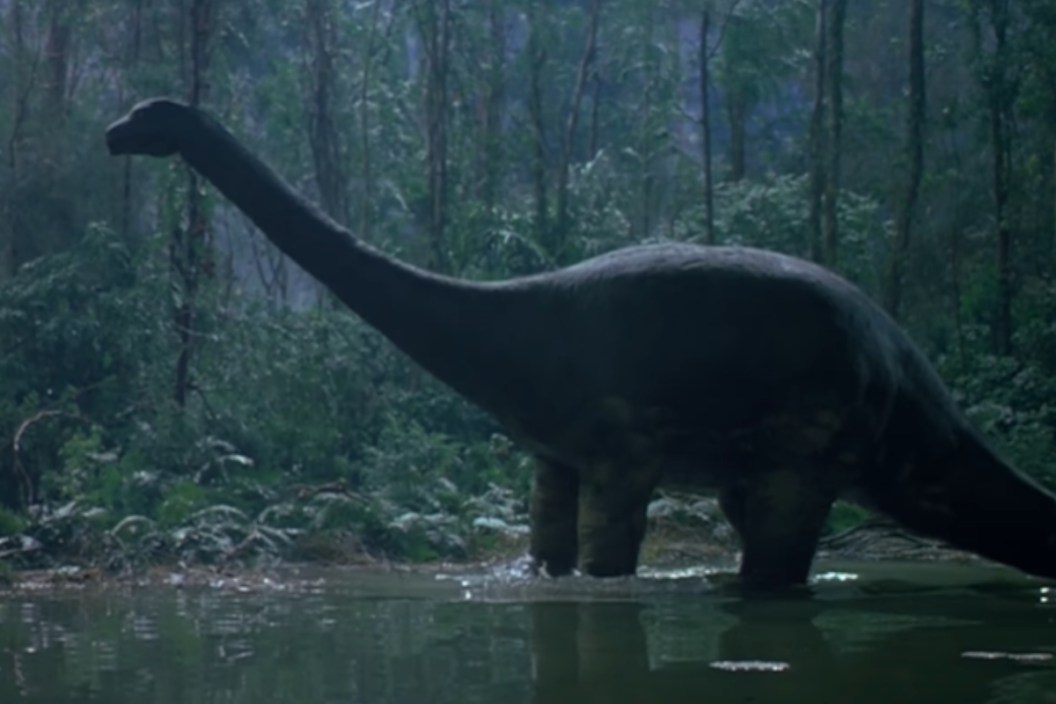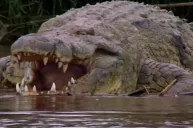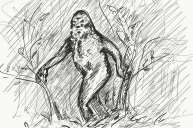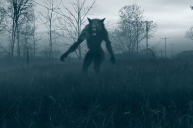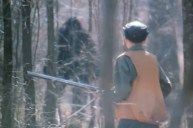Is there really a living dinosaur still roaming around Africa?
It seems like every corner of the world has their own legends of mysterious animals that are still unknown to science. It has spawned an entire field of zoology. Cryptozoologists specifically study the theory of hidden animals. Some of the more famous cryptids that may or may not exist include North America's Bigfoot or Sasquatch, the Loch Ness Monster or Nessie, of Scotland, and the Yeti in Nepal.
However, one of the more fascinating and mysterious hidden creature legends comes from Central Africa. More specifically, the Congo River Basin. For more than a hundred years, sightings and tales have persisted of a dinosaur-like creature that has survived into modern times.
Often described as resembling an apatosaurus (aka: brontosaurus), the creature's existence is one of hot debate with scientists. Because if a dinosaur from the Jurassic did survive into modern times, it would be nothing less than the greatest scientific discovery ever. This is the legend of a beast the locals have dubbed "mokele-mbembe."
What is the mokele mbembe?
Descriptions vary on one of the more curious additions to modern cryptozoology. However, most describe a large brown or brownish-gray beast between 30 and 35 feet in length. The body is often described as being similar to that of a hippo or a rhinoceros. The key difference being that it also allegedly has a long neck and tail like the many species of sauropod dinosaur that paleontologists know from the fossil record. Of course, it was assumed that most of these animals died out millions of years ago. Of course, this is also what makes the legend so intriguing. Many of the eyewitnesses describe seeing spines or a frill on the back on the animal's neck.
The idea that a dino survived into the 21st and 20th century would undoubtably be the scientific story of the century. There are some eyewitness sightings that vary from this description, but the majority of them seem to describe a dinosaur in the wrong place and time. The name "mokele mbembe," according to Cryptid Wiki, means "one who stops the flow of rivers." Which is fitting because the beast is almost always reported either in or very near water.
Are there dinosaurs alive in Africa?
https://youtu.be/Oy5kLH1wtuU
According to Scientific American, the mokele mbembe first began to gain traction in popular culture back in 1909. That was the year that a German showman named Carl Hagenbeck first published his book "Beasts and Men." Hagenbeck is often credited as being one of the first to popularize what became known as the modern zoo. Although he was also a frequent animal trader who often supplied the animals for the circuses that were popular in North America at the time.
In Beasts and Men, Hagenbeck wrote about rumors he had heard of a strange creature wandering around an area known as Rhodesia, or as it is better known today, Zimbabwe. He was the first person to suggest that the beast may be a dinosaur that survived until modern times. Hagenbeck did search for the beast at least once, but it seems his efforts were unsuccessful. As were the many scientific expeditions that have followed. One interesting wrinkle to the story here, as noted by Scientific American, is that the original dinosaur sightings in Africa were centered more towards the Southern part of Africa. However, today the Republic of the Congo and Cameroon are where the place that most of the sightings are reported. Especially along the Ngoko River which forms the border between the two African countries. This part of the world is extremely remote. It is one of the closest things to a "Lost World" left on Earth. There are few paved roads, which makes travel difficult. As a result, few researchers go to these areas looking for a new species.
Scientific American also notes that unlike popular belief, Africa's environment has been in a constant state of flux for the last few million years. One of the big arguments for a dinosaur surviving in Africa in the past was that the area has changed little since the time of the dinosaurs. According to Live Science, reports of dinosaur-like creatures in the Congo date all the way back to the 16th century. The first two authors to report on that were Daniel Loxton and Donald Prothero. The two had previously written about other famous legends in their book "Abominable Science," before doing some research on what was going on in the Congo.
Reports and Expeditions
Many scientific expeditions have gone out in search of Mokele-mbembe over the years. Now retired University of Chicago Biochemistry Professor Roy Mackal went looking twice in the early 1980s. He focused heavily on Lake Tele and Likouala in the Congo on his trips. Mackal never saw the creature himself, but he became convinced there is something to the tales based on the consistency of the eyewitness descriptions of the creature.
"What impressed me was the descriptions matched," Mackal told the History Channel in an episode of MonsterQuest. "
One of the more consistent things about the sightings is the animal's behavior. Many of the reports are fleeting glances of the creature in the water. Many eyewitnesses only see the creature's head and neck as it comes above water to feed. Then it submerges again, disappearing into the murky abyss like a reptilian crocodile.
Another consistency in the accounts comes from the fear many eyewitnesses have. There are rumors the creature will attack humans in some instances. Many expeditions have gathered eyewitness accounts from the pygmy hunter-gatherers who live in the area. Some of these accounts say the creature will flip boats in the river. Many say the creature makes a terrifying noise. Other accounts state that some hunters once killed one of the animals. However, the meat proved to be toxic when consumed, which only frightened the people more.
In 1992, some of the only evidence of the creature was captured by a Japanese expedition at Lake Tele. Unfortunately, the footage is extremely blurry. And it was shot from an airplane, which makes identification even more difficult. Skeptics claim the object in the film is likely an elephant or hippo swimming across the lake. We may never know for sure. The only physical evidence of the creature's existence are the occasional tracks found by scientific expeditions. However, most of the analysis of these tracks has proven inconclusive at best. Some of the tracks may be cases of mistaken identity with known animals too.
In popular culture
The idea of a dinosaur living in modern times has obviously captured the public's imagination over the years. Every few years a new TV documentary will pop up following another intrepid group of explorers into the remote reaches of the Congo searching for this animal.
In 1985, the legend of mokele mbembe hit the big screen. Walt Disney Studios released a film under their Touchstone label called "Baby: Secret of the Lost Legend" starring William Kat, Mary Sean Young, and Patrick McGoohan. The plot revolved around a couple who discover and rescue a juvenile mokele mbembe in the jungle. The filmmakers obviously did their research, as much of the plot used tidbits of the legend including the bit about the meat of the creature allegedly being poisonous.
If there really is a living dinosaur still roaming around central Africa, one can only hope modern technology will reveal it to modern science sometime soon. If not, it will simply remain another intriguing mystery of the dark continent.
For more outdoor content from Travis Smola, be sure to follow him on Twitter and check out his Geocaching and Outdoors with Travis YouTube channels.
NEXT: THE AXIS DEER AND HOW THEY'RE IMPACTING PARTS OF THE UNITED STATES
WATCH
